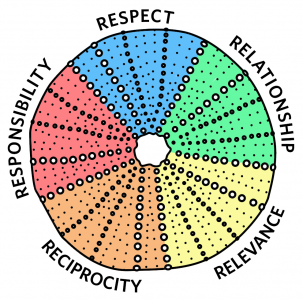|
|
Listen to Dr. Jean-Paul Restoule discuss the inspiration for the development of the 5Rs model, and some initial considerations when thinking about why and how to integrate Indigenous pedagogies into your online classroom.
Below, visit the five R tabs to learn more about each of the five elements of the 5Rs model.
|
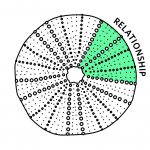 …the other Four R’s of respect, reciprocity, relevance, and responsibility can only truly be realized through conscious tending and effort to relationships. Relationships between teacher and learner, and between community, culture, and school underlie all aspects of Indigenous education …the other Four R’s of respect, reciprocity, relevance, and responsibility can only truly be realized through conscious tending and effort to relationships. Relationships between teacher and learner, and between community, culture, and school underlie all aspects of Indigenous education
“Relationships are reciprocal between teacher and student, and should foster connection to community and self. As an educator, before you can begin to teach the content, you need to foster and embrace a relationship at some level with each of your students. They need to feel like they are valued in your class and respected as an individual. Online learners can feel disconnected and harnessing a personal relationship to their peers and instructor can be a bit unfamiliar, compared to the in-person learning environment.” (Atkins & Lake, 2021) |
Educators offer their ideas about developing |
Guiding Questions
Consider these questions when developing learning objectives, learning outcomes, learning activities, and assessments.
- How can you foster relationships between students, peers, and the learning community?
- Are the relationships reciprocal and do they foster personal growth?
 |
Visit the Relationships chapter in Facilitating online learning with the 5R’s (Atkins & Lake, 2021) to discover digital tools and activities you can integrate into your course design to support relationship development.
Learn more by exploring examples in the Cross-Cutting Themes and Examples page of this resource. Choose from a variety of UBC support tools and technologies to implement the 5Rs in your courses. |
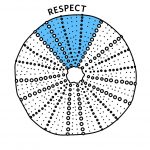 In the context of the Five R’s, respect refers to the need to recognize and respect First Nations cultural norms and values…Importantly, Indigenous worldviews are holistic, meaning that hierarchies and separation between beings are not inherent…For Indigenous cultures, a holistic worldview encompasses attitudes towards nature, community, and education. In the context of the Five R’s, respect refers to the need to recognize and respect First Nations cultural norms and values…Importantly, Indigenous worldviews are holistic, meaning that hierarchies and separation between beings are not inherent…For Indigenous cultures, a holistic worldview encompasses attitudes towards nature, community, and education.
(Tessaro et al., 2018 and references therein) “You need to tailor [your learning design] to your local environment and community, as it is important to use locally appropriate resources relevant to the area you are occupying. For example, if you live in BC and work in SD61, you would use your local district’s Indigenous Education Department (see for example the SD61 Indigenous Education Department website) as a resource for your learning. Most of these departments have their own website dedicated to cultural resources.” (Atkins & Lake, 2021) |
Colleagues reflect on what the 5Rs element |
Guiding Questions
- How can the online learning environment recognize and respect Indigenous cultural values and norms?
 |
Visit the Respect chapter in Facilitating online learning with the 5R’s (Atkins & Lake, 2021) to discover digital tools and activities you can integrate into your course design to support learning activities that teach about respect and integrate local resources respectfully.
Learn more by exploring examples in the Cross-Cutting Themes and Examples page of this resource. Choose from a variety of UBC support tools and technologies to implement the 5Rs in your courses. |
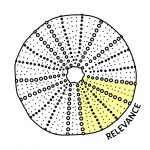 As part of the Five R’s, learning should be relevant to First Nations culture and ways of knowing, which means going beyond books…Learning that is relevant to First Nations culture should be based typically in community and oral communication. As part of the Five R’s, learning should be relevant to First Nations culture and ways of knowing, which means going beyond books…Learning that is relevant to First Nations culture should be based typically in community and oral communication.
(Tessaro et al., 2018 and references therein) “Relevancy is important because it provides a realistic and grounded meaning to your lessons and your course…
(Atkins & Lake, 2021) |
Perspectives on relevance to community, |
Guiding Questions
- How does this course or classroom reflect and connect to the learners’ current life, culture, and interests?
- Is this coursework relevant to the learners’ larger community, career goals, or interests?
 |
Visit the Relevance chapter in Facilitating online learning with the 5R’s (Atkins & Lake, 2021) to discover digital tools and activities you can integrate into your course design to make learning relevant.
Learn more by exploring examples in the Cross-Cutting Themes and Examples page of this resource. Choose from a variety of UBC support tools and technologies to implement the 5Rs in your courses. |
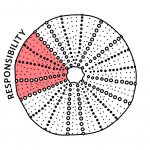 In Indigenous education, both the teacher and learner have a responsibility to recognize and uphold First Nations values, practices, and ways of knowing…Further, personal responsibilities and relationships, such as to family members, work, or community, are acknowledged for their role in the functioning of society and the shaping of daily experiences. In Indigenous education, both the teacher and learner have a responsibility to recognize and uphold First Nations values, practices, and ways of knowing…Further, personal responsibilities and relationships, such as to family members, work, or community, are acknowledged for their role in the functioning of society and the shaping of daily experiences.
(Tessaro et al., 2018) “Responsibility means that both the instructor and learner have a responsibility and requirement to uphold cultural, as well as personal/social, aspects of being. Acknowledging and embracing that your students are going to be entering this digital classroom from a variety of physical and mental spaces will encourage the instructor to draw from resources from a variety of backgrounds to support the learning in the course. Choosing materials authored by a diverse group of peoples will cast a broader sense of connection to your students and enhance their world-view of knowledge systems available. The resources you integrate into your classroom should reflect the class demographic to encourage students to relate to the content on a personal level, but also bring light to other resources, perspectives, and ideas which may be unfamiliar to them”. (Atkins & Lake, 2021) |
Reflections on ‘responsibility’, and the |
Guiding Questions
- Does this course uphold, value and reflect Indigenous Knowledge and/or Indigenous Methodologies?
- What responsibility does this course have in respecting and responding to the different types of learners in the course?
 |
Visit the Responsibility chapter in Facilitating online learning with the 5R’s (Atkins & Lake, 2021) to discover digital tools and activities you can integrate into your course design to engender responsibility to self, others, community, and worldviews.
Learn more by exploring examples in the Cross-Cutting Themes and Examples page of this resource. Choose from a variety of UBC support tools and technologies to implement the 5Rs in your courses. |
 Indigenous scholars underline the significance of reciprocity as imperative for Indigenous research…[it] must be mutually beneficial to researcher and participants instead of solely to the researcher… Indigenous scholars underline the significance of reciprocity as imperative for Indigenous research…[it] must be mutually beneficial to researcher and participants instead of solely to the researcher…
(Tessaro et al., 2018 and references therein) For Kirkness and Barnhardt (2001):
“Reciprocity means honouring student voice and choice by creating equitable relationships.” (Atkins & Lake, 2021) |
Reciprocity as mutual benefit; reciprocity |
Guiding Questions
- How has the instructor grown as an educator or community member as a result of this course and their interactions with the learners?
- What reciprocal actions have been taken to ensure that each person’s voice, culture, and beliefs have been heard to ensure each individual learns something by the end of this course that they didn’t know or understand before?
- How are two-way interactions (teacher as facilitator, teacher as learner, student as learner, student as teacher) utilized to maximize engagement and learning?
 |
Visit the Reciprocity chapter in Facilitating online learning with the 5R’s (Atkins & Lake, 2021) to discover digital tools and activities you can integrate into your course design to engender responsibility to self, others, community, and worldviews.
Learn more by exploring examples in the Cross-Cutting Themes and Examples page of this resource. Choose from a variety of UBC support tools and technologies to implement the 5Rs in your courses. |
